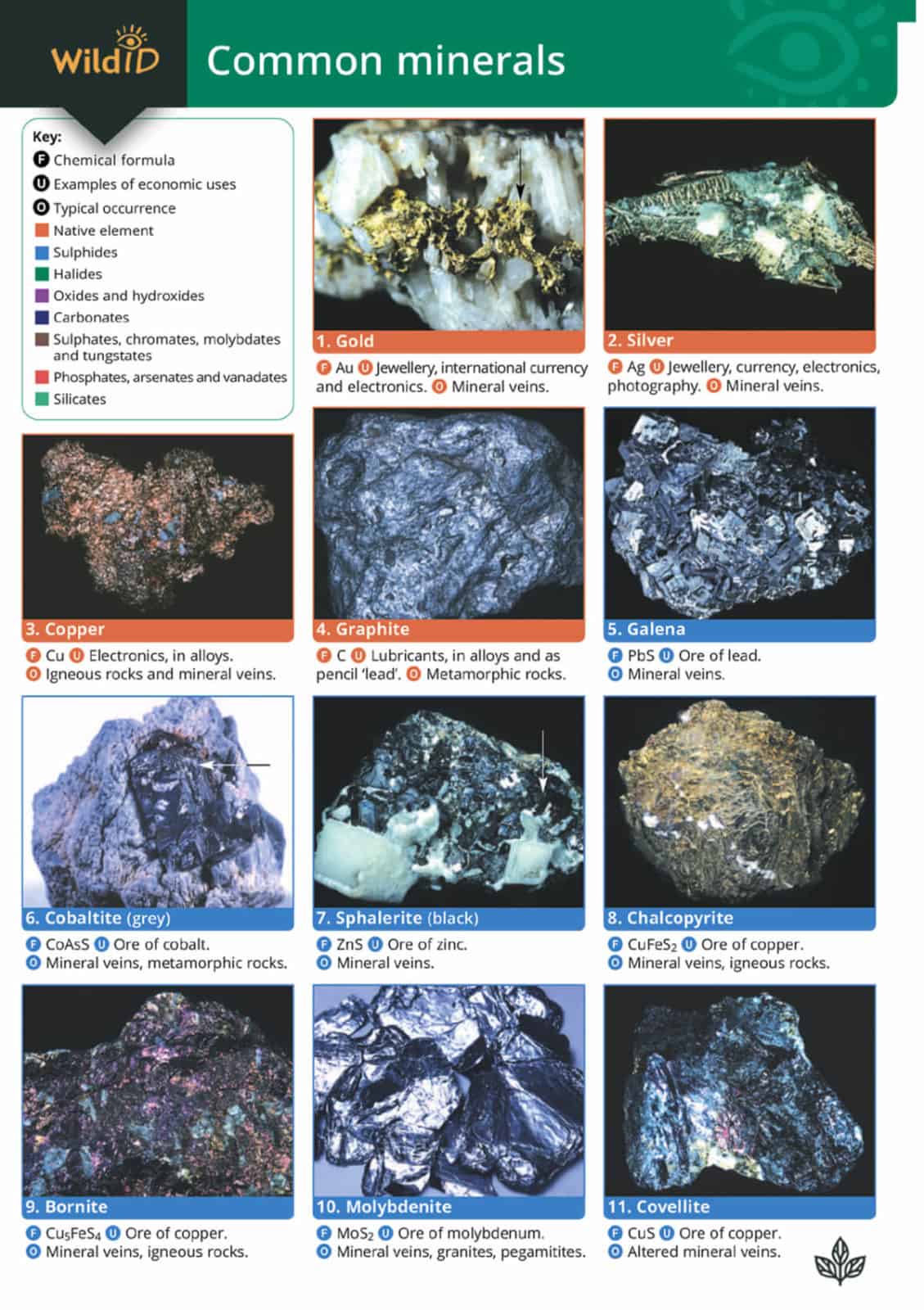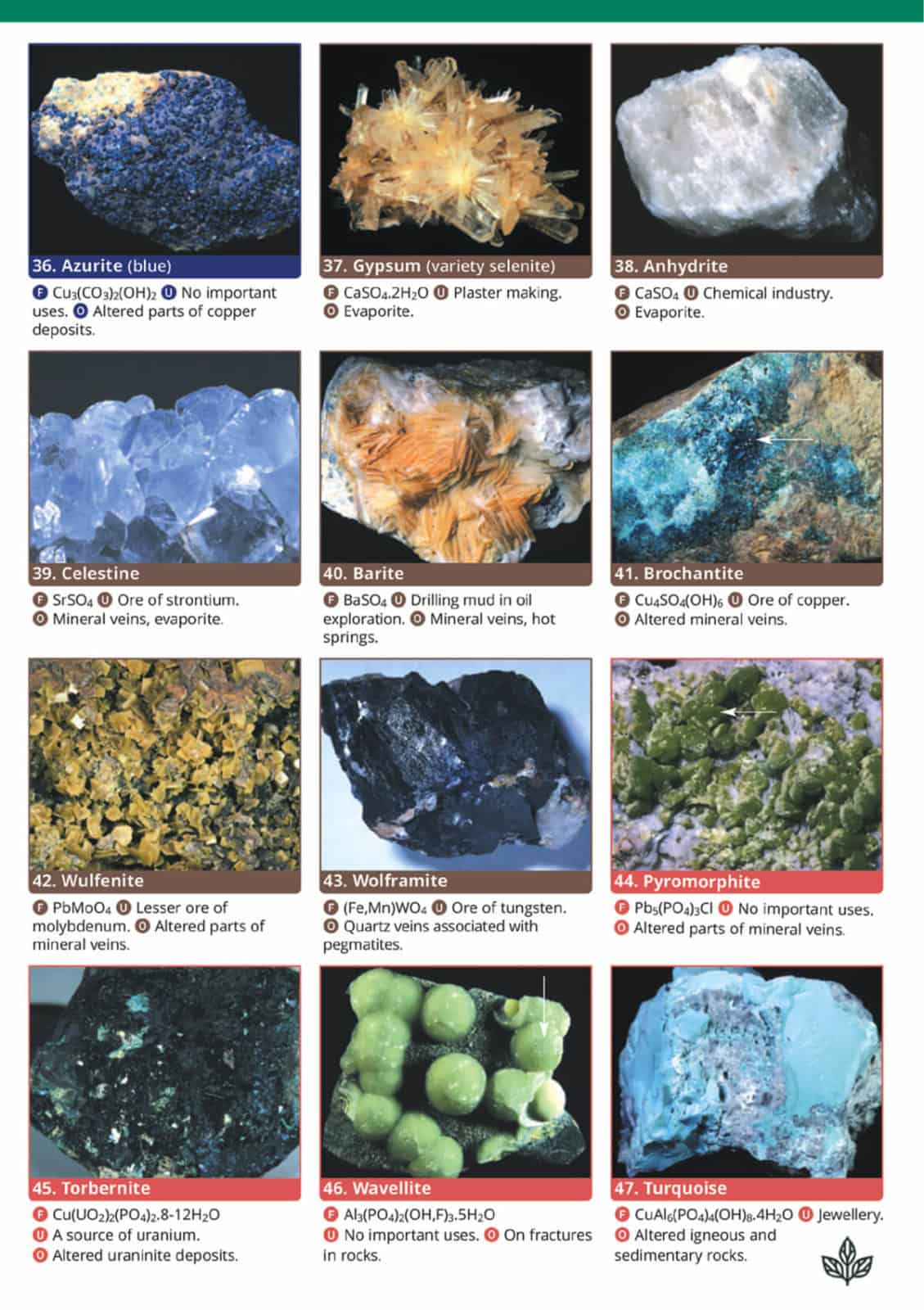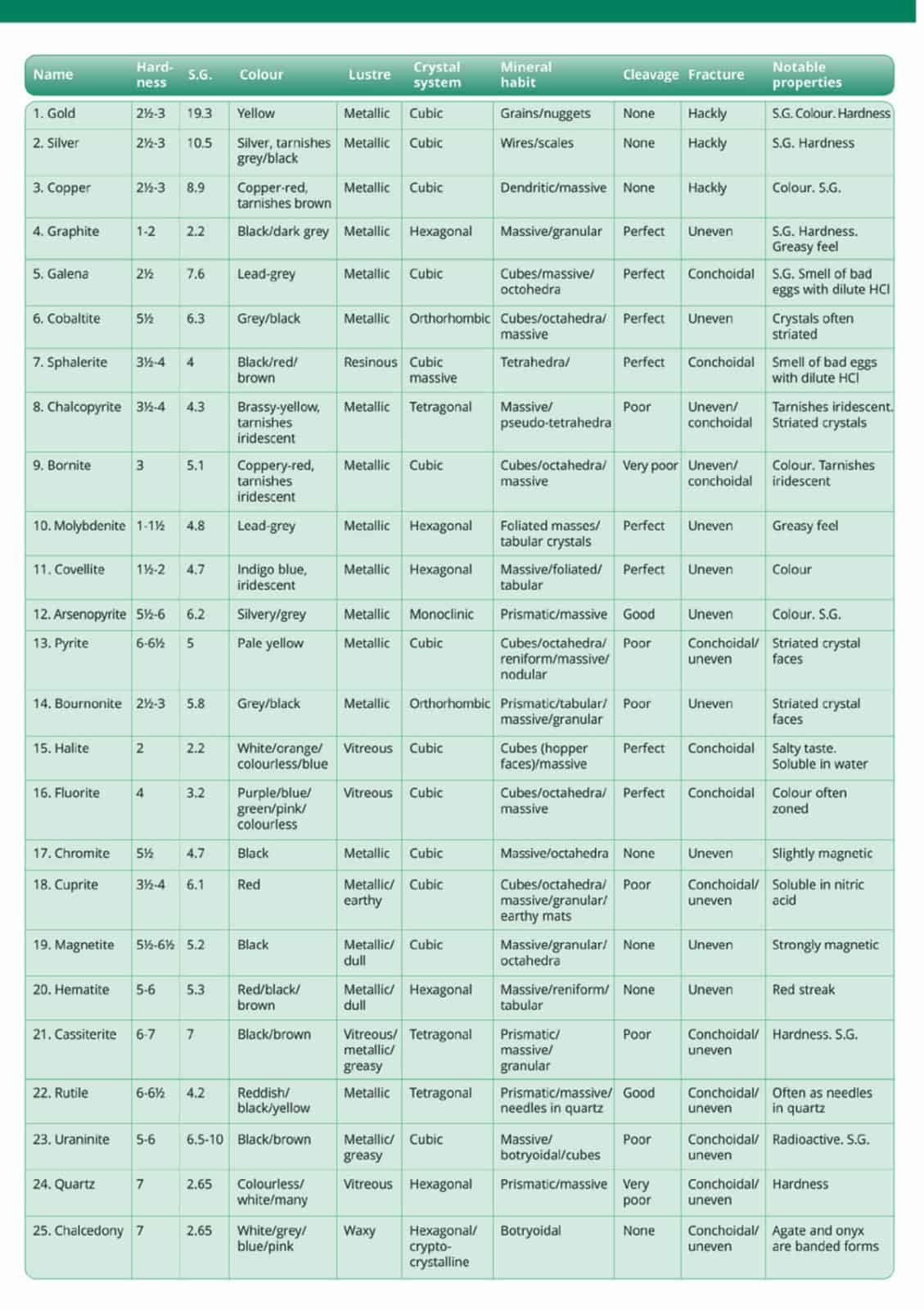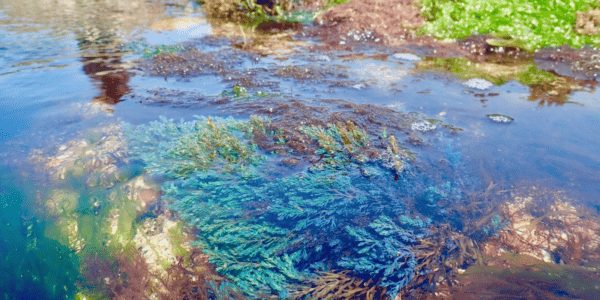Minerals guide
The Minerals guide features 71 major minerals.
From calcite to chalcedony, from topaz to turquoise, photographs and text will help you recognise each mineral in the field. Use the text on the reverse side to confirm your identification of a mineral. It covers colour, hardness, lustre, habit, cleavage and fracture properties. Also discussed are the field occurrence, formation and economic uses of minerals.
Minerals are chemical compounds or free uncombined elements. Usually they are solid and crystalline, but some appear amorphous. Minerals occur naturally. Chemically they split into several groups. These groups include native elements, oxides, carbonates and silicates.
Overall minerals have enormous economic significance. Many of the native elements are precious metals like silver and gold. Halides are useful in the chemical industry, while many sulphur compounds are sources of metals.
Many minerals, including the choicest specimens, form in mineral veins. A vast range of minerals occur in these hydrothermal veins. Sometimes the minerals are valuable, such as galena, an ore of lead. But others are worthless, like calcite and quartz. However they are still interesting to the collector of mineral specimens. Old spoil heaps are a good place to hunt. Minerals are also found within igneous, sedimentary and metamorphic rocks. Common igneous rock minerals include feldspars and micas.
The field identification of minerals is straightforward. No complex scientific equipment is needed, although a hand lens is useful. Often a coin or fingernail is enough to judge mineral hardness.






